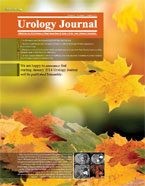Achievements in Postgraduate Urologic Education in Iran: A Quantitative Study
Urology Journal,
Vol. 10 No. 4 (2013),
4 January 2014
,
Page 1119-1125
https://doi.org/10.22037/uj.v10i4.2262
Abstract
Purpose: The study focus is on the quantitative achievements in urology education and growth trends in urologic surgical workforce and fellowships by gender since 1979.
Materials and Methods: This comprehensive national quantitative study was performed in Iranian Academy of medical science. The first hand data gathered from The Iran Specialty Training Council of and also from Medical Council of Iran.
Results: Over the period 1979 to 2012, the numbers of resident's admission in urology/ fellowships have increased from 5 to 51 and from 0 to 24 respectively, and graduated urologists of national programs has grown from 5 (14%) in 1979 to 47 (100%) in 2012. Iranian urologists workforce haves increased from 315 in 1979 to 1637 in 2012. In 1979, there was 1 urologist for every 117,460 population, while in 2012 there was 1 urologist for every 46120 population. Iran Urologists to population rate is 1:46120. These statistics represents significant improvement from 34 years ago. Number of female urologists has progressively increased from 1 in 1979 (0%) to 110 (7%) in 2012. Urology fellowships are offered in 6 fields since 1994 in Iran. The number of trained fellowships grew sharply and reached to 221 in 2012.
Conclusion: The current urology training is successful to improve urology health care. Along with expansion of urology and fellowship training, the number of Iranian female urologists significantly increased. To our knowledge Iran had the greatest growth rate of female urologist training in the Middle East, and is comparable with those in the most progressed countries in the world.
How to Cite
- Abstract Viewed: 225 times
- PDF Downloaded: 139 times
